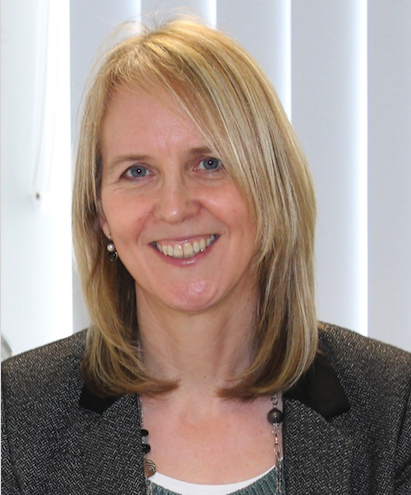By Dr Jacky Forsyth @JackyForsyth @WiseConf18
Research on women and how a woman’s body responds to exercise lags far behind the research carried out on men. For instance, there is limited research on how variations in hormones can affect sports performance [1], and females are significantly under-represented in research in sports and exercise medicine [2]. Males also outnumber females in sport- and exercise-related employment, especially in graduate-level jobs, senior roles, and in leadership positions [3]. There are far fewer female head athletic trainers [4], sports physicians [5], sport coaches/head coaches [6,7] and governance executives of organised sport [3,8,9] than there are male.
To address some of these gender inequalities that relate to research and to graduate-level employment, our conference: “Women in Sport and Exercise Conference 2018: Blood, Sweat and Fears” is being held on 13th-14th June 2018. The aim of the conference is to debate female-specific, sports and exercise medical issues, and to raise awareness of the issues and opportunities for women’s exercise participation. Conference keynotes come from Annamarie Phelps CBE OLY, Vice Chair of the British Olympic Association and an advocate for safe and inclusive sport for all; Angela Smith, who was instrumental in the formation of the women’s squash professional organisation and circuit; and Lisa O’Keefe, Insight Director at Sport England, who will be sharing the story behind their ‘This Girl Can’ campaign. There will also be invited and guest speakers from university academics, medical professionals, and organisations such as Women in Sport. Topics include: nutrition for the exercising female; cardiovascular health, female hormones and exercise; lifestyle interventions for women’s health issues; breast biomechanics and health implications; bone health; female sports endocrinology; concussion and the female athlete; the benefits and risks of menstruation and sport; the menstrual cycle and hormonal contraceptives; body image; physical activity for pregnant women; iron deficiency; gender diversity in women’s coaching; male/female differences in pacing, fatigue and tactics of winning races; the impact of puberty on girls’ attitudes towards sport; a performance psychology approach to building confidence; motherhood as an athletic career transition; homophobia; and diversity. The conference is endorsed (which include continuous professional development [CPD] points) by the British Association of Sport and Exercise Sciences (BASES), Register of Exercise Professionals (REPS), and the Chartered Institute for the Management of Sport and Activity (CIMSPA), with support also from Women’s Sports Network, C-Motion Research Biomechanics, Routledge, Fitrwoman, and PhysiYoga Designs Ltd. We are expecting a range of delegates to attend, including researchers, academics, clinicians, physiotherapists, sports physicians, sports coaches, and those involved in the governance of sport.
The Women in Sport and Exercise conference forms part of the Women in Sport and Exercise Academic Network (WISEAN), the aim of which is to grow, strengthen and promote research on women in sport and exercise, with the goal of optimising women’s athletic success and their participation. Through the conference and network, we aim to promote and grow research expertise and collaboration.

For more information visit: http://www.staffs.ac.uk/womeninsport/
Dr Jacky Forsyth is a senior lecturer in exercise physiology at Staffordshire University. Her research is on women’s exercise physiology and health, in particular how ovarian hormones interact with exercise and bone health. j.j.forsyth@staffs.ac.uk

***
References
- Bruinvels, G., Burden, R. J., McGregor, A. J., Ackerman, K. E., Dooley, M., Richards, et al. (2017). Sport, exercise and the menstrual cycle: where is the research? British Journal of Sports Medicine, 51(6), 487–488. http://doi.org/10.1136/bjsports-2016-096279
- Costello, J. T., Bieuzen, F., & Bleakley, C. M. (2014). Where are all the female participants in Sports and Exercise Medicine research? European Journal of Sport Science, 14(8), 847–851. http://doi.org/10.1080/17461391.2014.911354
- Pfister, G., & Radtke, S. (2009). Sport, women, and leadership: Results of a project on executives in German sports organizations, 9(July). http://doi.org/10.1080/17461390902818286
- Mazerolle, S. M., Burton, L., & Raymond, J. (2015). The experiences of female athletic trainers in the role of the head athletic trainer, 50(1), 71–81. http://doi.org/10.4085/1062-6050-49.3.50
- Stern, N. G., Gateley, A., & Barrett, J. R. (2013). Is there perceived gender disparity for women practicing sports medicine? Advancing Women in Leadership, 33, 48–51.
- Norman, L. (2012). Developing female coaches : strategies from women themselves, 3(3), 227–238.
- Walker, N. A., & Bopp, T. (2011). The underrepresentation of women in the male-dominated sport workplace : perspectives of female coaches, 15(1), 47–64. http://doi.org/10.2190/WR.15.1.d
- Burton, L. J. (2015). Underrepresentation of women in sport leadership: A review of research. Sport Management Review, 18(2), 155–165. http://doi.org/10.1016/j.smr.2014.02.004
- Koca, C., & Öztürk, P. (2015). Gendered perceptions about female managers in Turkish sport organizations, 15(3), 381–406.